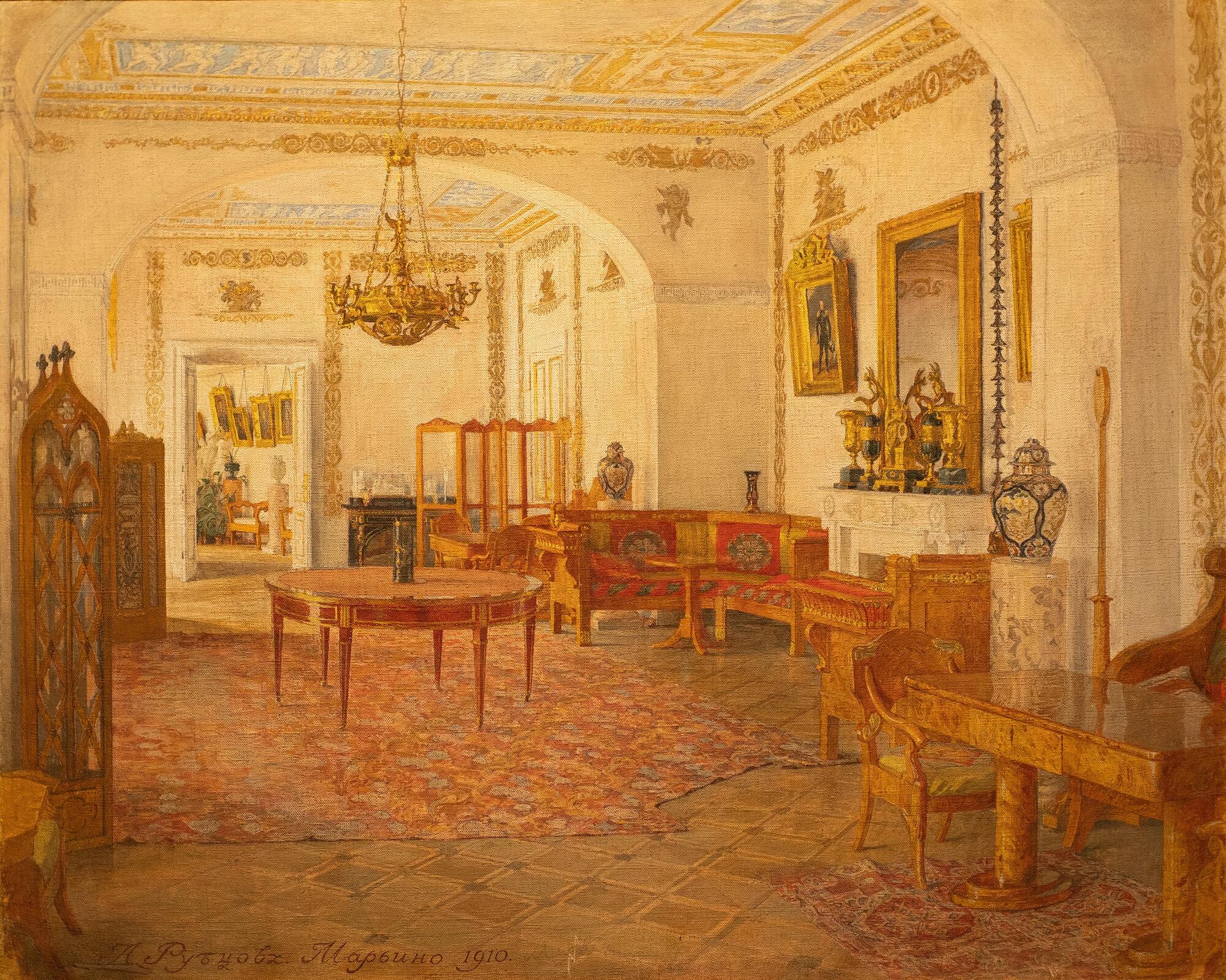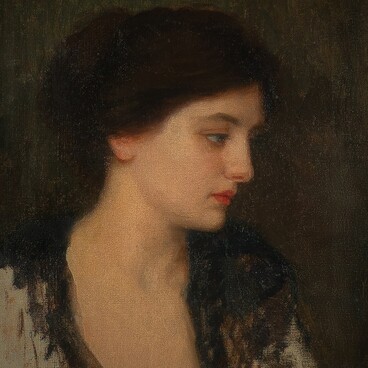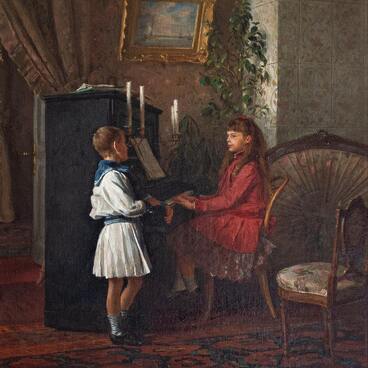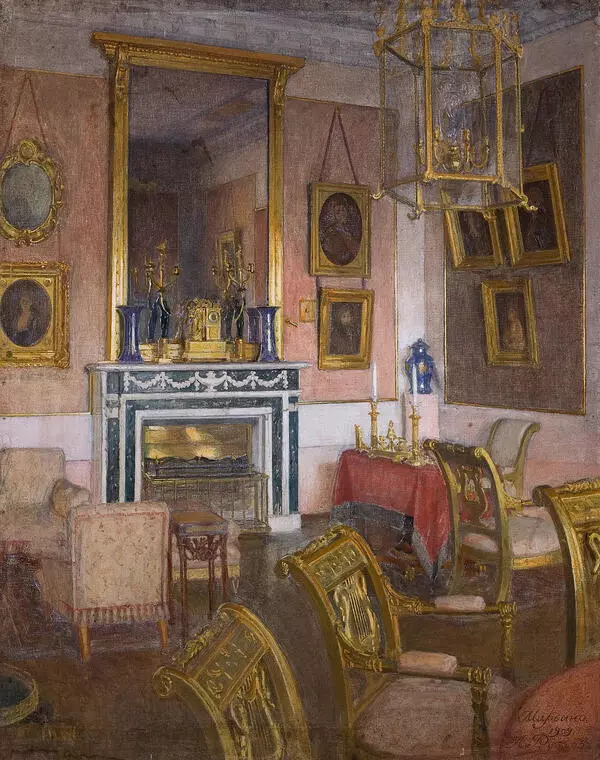The collection of the museum contains the work of Alexander Rubtsov “The Yellow Living Room in the Maryino Estate” created in 1910.
Rubtsov was born in 1884 in St. Petersburg. He studied at the St. Petersburg Academy of Arts under Pavel Chistyakov and other prominent teachers. And after graduation, he received the right to make a four-year funded trip abroad. He visited England, Spain, France, Germany, and Switzerland. In early 1914, the artist left Russia for Tunisia, where he remained for the rest of his life. Rubtsov’s friend and French biographer Pierre Dumas said, “What a blessing for Tunisia to have a native of distant Russia capturing the unique beauty of this country, its customs, architecture, household items, and national clothes.” Today, the artist’s works are in several French museums, as well as collections of Tunisian and French collectors.
The painting “The Yellow Living Room in the Maryino Estate” belongs to the interior portrait genre.
The Maryino estate is the former estate of the Stroganov-Golitsyn family, located 75 kilometers from St. Petersburg. In his student years, Rubtsov spent a lot of time there: most of his paintings were created in that very estate of the Golitsyn princes.
The construction of the Maryino estate began in 1726. The project was prepared by the former serf of the Stroganovs, architect Andrey Voronikhin, however, he only managed to lay the foundation for the hydraulic engineering system and design the construction of roads. He was succeeded by his student, Ivan Kolodin. In 1811, a palace appeared on the banks of the Tosna River. The estate was named Maryino — in honor of the founder Mariya Stroganova.
The interior of the house was designed by the Italian master Giovanni Battista Scotti and included sculptures and paintings brought from the Stroganov Palace on Nevsky Prospect.
The color of the artificial marble was the reason why the living room was named Yellow. The furniture set in the room is made of poplar. The artist highlighted the expressive texture of the wood and the shine of the polished surface. In the center of the hall, there is a Jacob-style table — a Russian name for the mahogany furniture, primarily of rectilinear forms. Such furniture was decorated with brass or copper embossed inserts.
Rubtsov was born in 1884 in St. Petersburg. He studied at the St. Petersburg Academy of Arts under Pavel Chistyakov and other prominent teachers. And after graduation, he received the right to make a four-year funded trip abroad. He visited England, Spain, France, Germany, and Switzerland. In early 1914, the artist left Russia for Tunisia, where he remained for the rest of his life. Rubtsov’s friend and French biographer Pierre Dumas said, “What a blessing for Tunisia to have a native of distant Russia capturing the unique beauty of this country, its customs, architecture, household items, and national clothes.” Today, the artist’s works are in several French museums, as well as collections of Tunisian and French collectors.
The painting “The Yellow Living Room in the Maryino Estate” belongs to the interior portrait genre.
The Maryino estate is the former estate of the Stroganov-Golitsyn family, located 75 kilometers from St. Petersburg. In his student years, Rubtsov spent a lot of time there: most of his paintings were created in that very estate of the Golitsyn princes.
The construction of the Maryino estate began in 1726. The project was prepared by the former serf of the Stroganovs, architect Andrey Voronikhin, however, he only managed to lay the foundation for the hydraulic engineering system and design the construction of roads. He was succeeded by his student, Ivan Kolodin. In 1811, a palace appeared on the banks of the Tosna River. The estate was named Maryino — in honor of the founder Mariya Stroganova.
The interior of the house was designed by the Italian master Giovanni Battista Scotti and included sculptures and paintings brought from the Stroganov Palace on Nevsky Prospect.
The color of the artificial marble was the reason why the living room was named Yellow. The furniture set in the room is made of poplar. The artist highlighted the expressive texture of the wood and the shine of the polished surface. In the center of the hall, there is a Jacob-style table — a Russian name for the mahogany furniture, primarily of rectilinear forms. Such furniture was decorated with brass or copper embossed inserts.




